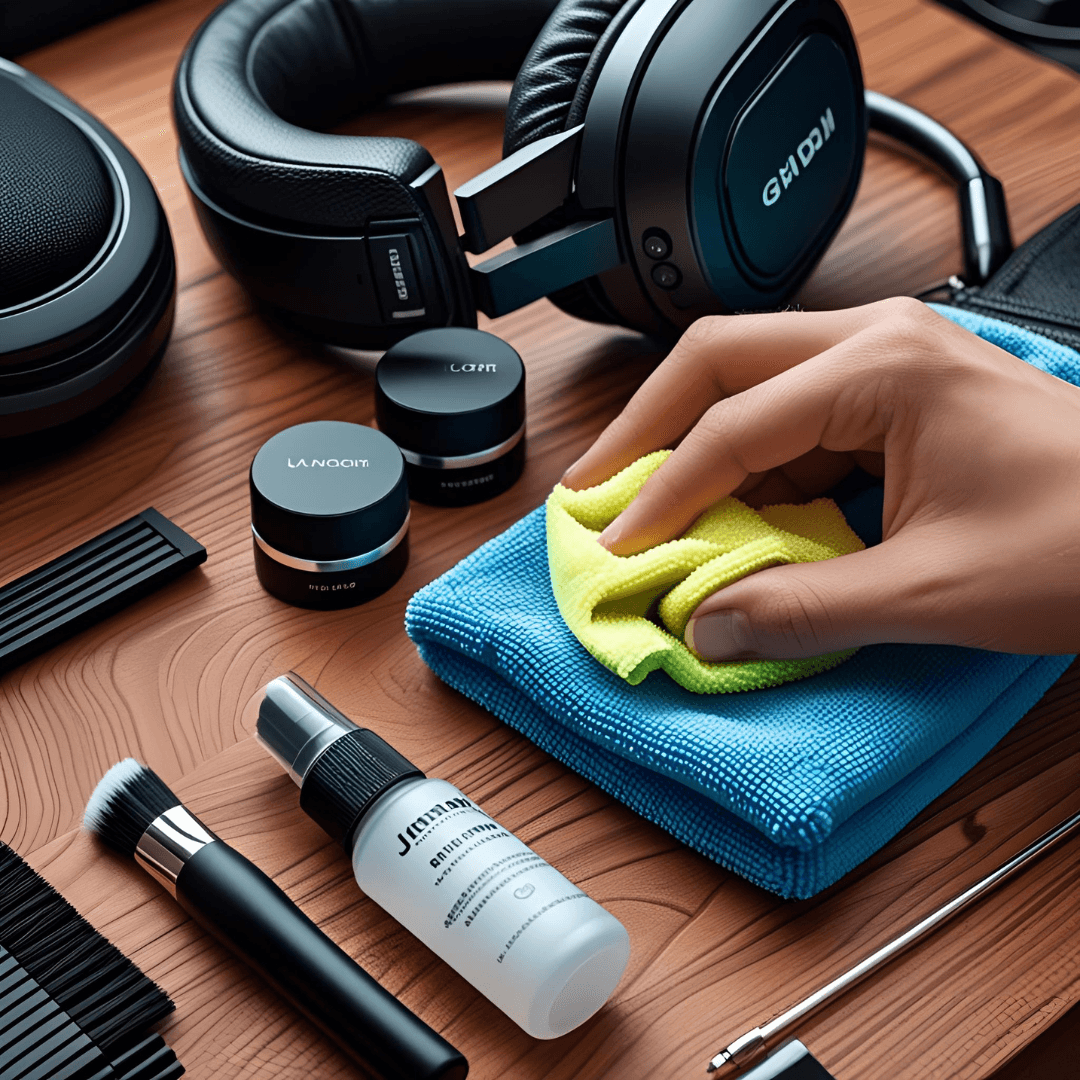
Unlock better sound and extend the life of your gear! Discover the essential audio cleaning kits and accessories for headphones, vinyl, speakers, and more in 2025.
Best Audio Cleaning Kits & Accessories
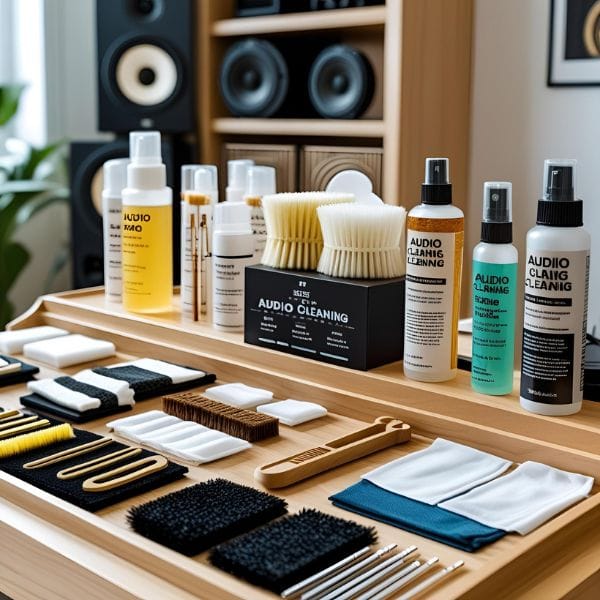
In the pursuit of perfect sound, we often focus on upgrading components – better headphones, a more powerful amplifier, or a high-resolution streamer. But a critical, often overlooked, aspect of maintaining peak audio performance and extending the lifespan of your valuable gear is regular and proper cleaning.
Dust, grime, earwax, oxidation, and environmental pollutants can subtly degrade sound quality, cause malfunctions, and even lead to premature equipment failure. Just as you wouldn’t let your car go without an oil change, your audio equipment deserves a consistent maintenance routine.
In 2025, with more intricate designs in portable tech and the timeless appeal of analog formats like vinyl, having the right cleaning kits and accessories is more important than ever. This guide will walk you through the essential tools and techniques to keep every part of your audio setup looking new and sounding its best.
Why Cleaning Your Audio Gear Matters
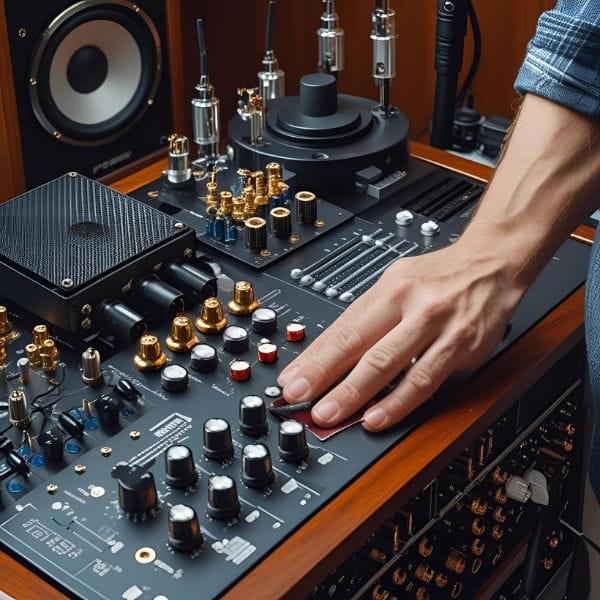
- Preserves Sound Quality: Dust on drivers, earwax in earbuds, or grime on vinyl records directly impacts clarity, dynamics, and overall fidelity. Clean components allow the signal to flow unhindered.
- Extends Lifespan: Buildup can cause overheating, short circuits, or wear down delicate moving parts (like a turntable stylus or headphone hinges). Regular cleaning prevents these issues.
- Maintains Hygiene: Especially for personal audio devices like headphones and earbuds, cleaning prevents the buildup of bacteria and ensures a more pleasant listening experience.
- Protects Investment: Audio equipment can be expensive. Proper care protects your financial investment and resale value.
Essential Cleaning Kits & Accessories for Every Piece of Gear
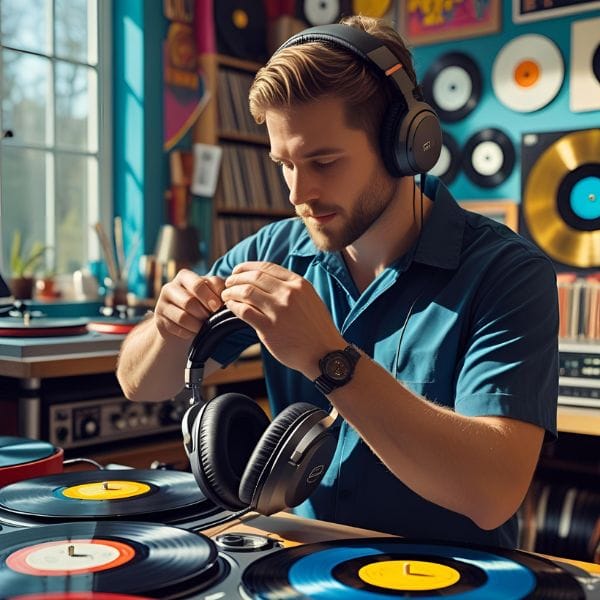
Let’s break down the best cleaning tools by the type of audio equipment they’re designed for.
I. For Headphones & Earbuds: Your Personal Sound Sanctuary
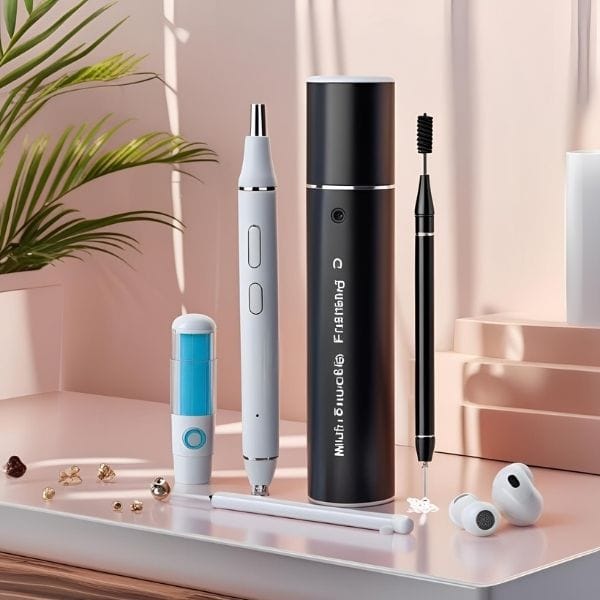
Headphones and earbuds come into direct contact with skin, hair, and earwax, making regular cleaning crucial for hygiene and sound.
- Multi-Function Earbud Cleaning Pen/Kit:
- What it is: These compact tools typically include a soft brush for mesh grills, a metal tip for stubborn wax in crevices, and a flocking sponge for cleaning charging cases.
- Why you need it: Essential for tiny earbud crevices, speaker mesh, and charging ports. Prevents sound degradation from wax/debris buildup and ensures charging pins remain effective.
- Key Accessory: Look for kits with an ergonomic design and multiple interchangeable tips.
- Microfiber Cloths (Lint-Free):
- What it is: Ultra-soft, highly absorbent cloths that trap dust and oils without scratching sensitive surfaces.
- Why you need it: Perfect for wiping down earcups, headbands, and the general exterior of headphones. Use dry or slightly dampened with water or a mild electronics cleaner.
- Key Accessory: Get several – designated for different tasks (e.g., one for dusting, one for light cleaning).
- Disinfectant Wipes (Alcohol-Based or Electronics-Safe):
- What it is: Pre-moistened wipes containing alcohol or other germ-killing agents that are safe for electronics.
- Why you need it: To sanitize ear pads, headbands, and frequently touched surfaces, especially after workouts or prolonged use. Ensure they are not overly wet to avoid moisture seeping into electronics.
- Caution: Avoid harsh chemicals or anything that could strip finishes or damage materials like leatherette. Always check manufacturer recommendations.
- Soft Brush / Cotton Swabs:
- What it is: Small, soft-bristled brushes (like a soft toothbrush or dedicated cleaning brush) and cotton swabs.
- Why you need it: For gently dislodging dust and debris from headphone grilles, ports, and crevices. Cotton swabs, lightly dampened with isopropyl alcohol, are great for cleaning tight spots and charging contacts.
II. For Vinyl Records & Turntables: Analog Purity
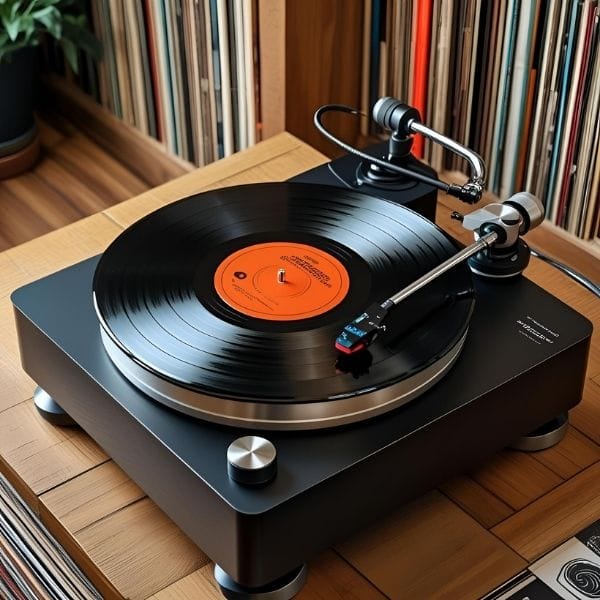
Vinyl’s tactile nature means it’s highly susceptible to dust, static, and fingerprints, all of which degrade playback.
- Carbon Fiber Record Brush:
- What it is: A brush with ultra-fine carbon fiber bristles that reach into record grooves to lift dust and dissipate static electricity.
- Why you need it: Your first line of defense before every play. Reduces surface noise and static pops.
- Key Accessory: A good quality brush is indispensable for any vinyl collector.
- Record Cleaning Solution & Velvet Brush:
- What it is: A specialized, anti-static cleaning fluid (often alcohol-free or specially formulated) used with a velvet-like brush to deep-clean record grooves.
- Why you need it: For more thorough cleaning of new or used records to remove manufacturing residues, dust, and grime that a dry brush can’t handle.
- Key Accessory: Often comes as a kit. Consider brands like Mobile Fidelity, Spin-Clean, or Boundless.
- Stylus Cleaning Brush / Fluid:
- What it is: A tiny, fine-bristled brush or a small bottle of cleaning fluid designed specifically for a turntable’s delicate stylus (needle).
- Why you need it: The stylus accumulates dust and vinyl residue, which affects tracking and sound. Regular cleaning (before each play or daily) prolongs stylus life and maintains sound clarity.
- Caution: Always brush from back to front only, never side-to-side, to avoid damaging the cantilever.
- Record Cleaning Machine (Manual or Ultrasonic):
- What it is: For serious collectors, these range from manual basin systems (like Spin-Clean) to vacuum-powered machines (e.g., Pro-Ject VC-S3) or advanced ultrasonic cleaners.
- Why you need it: Offers the deepest, most effective cleaning for large collections, removing embedded dirt and grime that manual methods can’t reach.
- Consider: A significant investment, but pays off in superior sound and record longevity.
III. For General Electronics & Connectors: The Unseen Flow
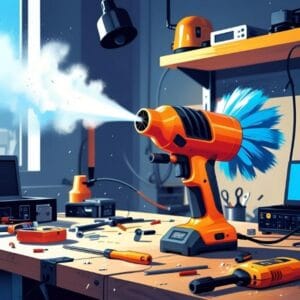
Dust, oxidation, and loose connections can affect any component, from amplifiers to DACs.
- Compressed Air Duster:
- What it is: Cans of compressed air (or electronic blowers) used to blast away dust from vents, ports, and internal components.
- Why you need it: Ideal for removing dust from amplifier vents (preventing overheating), speaker terminals, input/output jacks, and hard-to-reach areas on any electronic device.
- Caution: Use in short bursts, hold upright to prevent propellant discharge, and ensure components are unplugged.
- Contact Cleaner Spray:
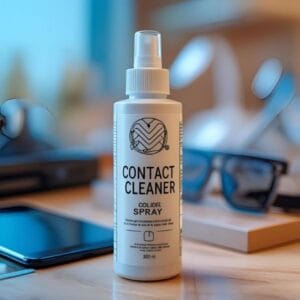
- What it is: A specialized non-conductive spray designed to clean and lubricate electrical contacts, preventing oxidation and improving conductivity.
- Why you need it: Essential for cleaning RCA, XLR, and other audio jacks/plugs that can become oxidized over time. Restores signal integrity and reduces crackling or intermittent sound issues.
- Use: Unplug the component, spray a tiny amount onto a cotton swab, and gently clean the contacts. Allow to dry completely.
- Soft Bristle Brush / Dusting Brush:
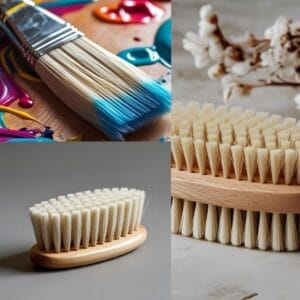
- What it is: A large, soft brush (like a makeup brush or dedicated dusting brush) for gently sweeping dust off surfaces.
- Why you need it: For regular dusting of speaker cabinets, amplifier chassis, and other larger surfaces without scratching.
IV. For Microphones: Clarity in Capture
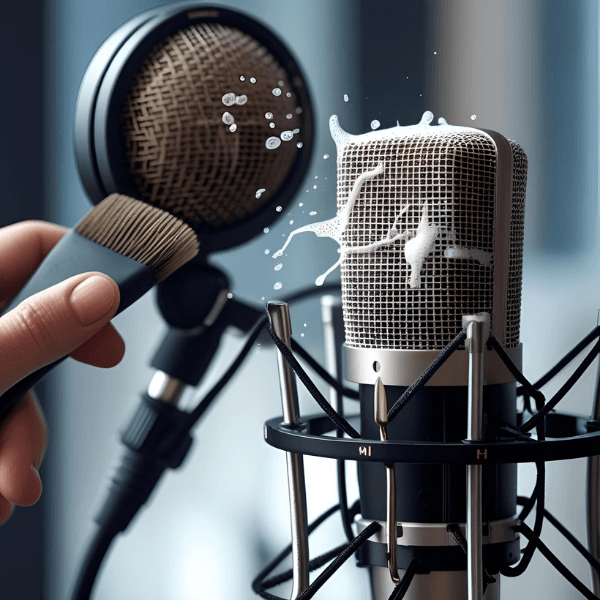
Microphones, especially handheld ones, accumulate grime and can suffer from debris in their grilles.
- Microfiber Cloth & Isopropyl Alcohol Solution:
- What it is: A lint-free cloth and a diluted solution of isopropyl alcohol (e.g., 70% or higher).
- Why you need it: For wiping down microphone bodies and grilles (if removable). Helps disinfect and remove sweat/grime.
- Caution: Never spray directly onto the mic. Apply to the cloth, and ensure no liquid enters the mic capsule. Removable grilles can often be gently washed in mild soapy water and thoroughly air-dried.
- Soft-Bristled Toothbrush / Small Crevice Brush:
- What it is: A soft-bristled brush for gently cleaning the mesh grille.
- Why you need it: To dislodge debris from the microphone grille. For non-removable grilles, hold the mic upside down to prevent debris from falling into the capsule.
V. For Screens & Displays (on Receivers, DAPs): Clear Viewing
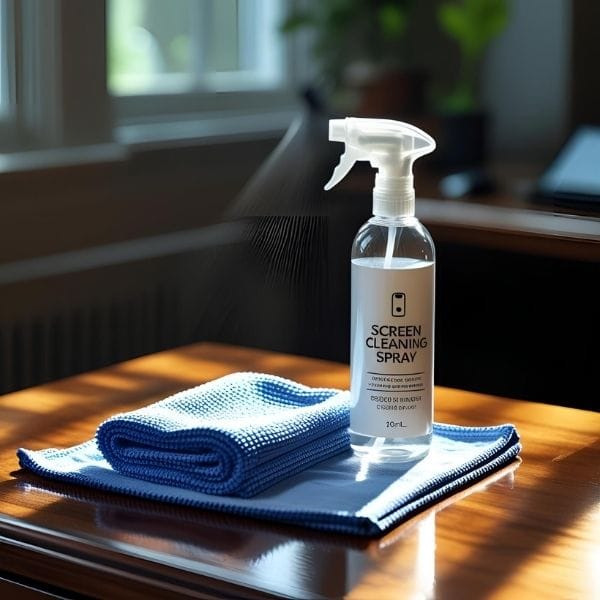
Many modern audio components feature touchscreens or displays that attract fingerprints and dust.
- Screen Cleaning Spray & Microfiber Cloth:
- What it is: A specially formulated, ammonia-free cleaning solution and a dedicated microfiber cloth for electronics screens.
- Why you need it: To clean fingerprints, smudges, and dust from the displays on DAPs, receivers, streamers, or other components with screens, ensuring clear visibility without damage.
- Caution: Never use harsh window cleaners. Apply spray to the cloth, not directly to the screen.
General Audio Gear Maintenance Tips
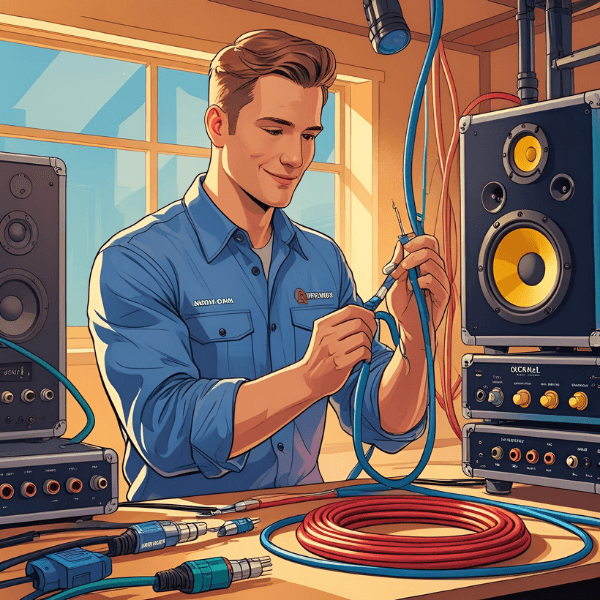
- Unplug Before Cleaning: Always power down and unplug any component before cleaning to prevent electrical shock or damage.
- Regular Dusting: Make it a habit to dust your entire setup regularly. Dust is the enemy of electronics.
- Avoid Harsh Chemicals: Stick to gentle, electronics-safe cleaners. When in doubt, plain distilled water on a microfiber cloth is often sufficient.
- Proper Storage: When not in use, protect portable gear with cases and keep vinyl records in anti-static sleeves.
- Read Manuals: Always consult your equipment’s user manual for specific cleaning instructions and warnings.
- Hands Off: Avoid touching sensitive components like speaker cones, turntable styli, or microphone capsules directly.
- Good Ventilation: Ensure your components have enough space for airflow to prevent dust from accumulating due to static charge and to prevent overheating.
Conclusion: The Soundtrack of Longevity

Investing in the best audio cleaning kits and accessories is not just about aesthetics; it’s about preserving the integrity of your sound and safeguarding your investment. A clean system performs better, lasts longer, and provides a consistently more enjoyable listening experience. Make cleaning a routine, and your pristine gear will reward you with pristine sound for years to come.
Related Links

Internal Guides & Reviews from Gear For Audio:
- Keep Your Audio Gear Clean: A Complete Guide for Pristine Sound
- The Ultimate Guide to Audio Cables and Adapters: Which Ones Do You Really Need?
- The 7 Best Portable Audio Accessories for On-the-Go Music Enthusiasts
- The Comeback of Vinyl: How Modern Turntables Are Elevating the Experience
- How to Eliminate Echo and Reverb in Your Home Recording Space: A Simple Guide
External Resources for Deeper Dive:
- Crutchfield – How to Clean Electronics (DoFollow – A reputable electronics retailer and educational resource, offering practical advice on cleaning various types of electronic equipment.)
📌 FAQ: Audio Cleaning Kits & Accessories

What are audio cleaning kits and why do I need one?
Audio cleaning kits are specialized tools designed to clean and maintain audio equipment such as headphones, speakers, turntables, and cables. These kits help remove dust, grime, and static buildup that can interfere with sound quality, ensuring your gear remains in optimal condition.
What are the best audio cleaning accessories in 2025?
The best audio cleaning accessories in 2025 include microfiber cloths, anti-static brushes, stylus cleaners, compressed air cans, and contact-safe electronic cleaning sprays. Kits from trusted brands like Audio-Technica, Hudson Hi-Fi, and GrooveWasher are highly recommended.
How do I clean audio equipment safely?
Always power off and unplug your gear before cleaning. Use a microfiber cloth for surface dust, isopropyl alcohol (70–99%) for contact points, and soft brushes for intricate areas. Avoid abrasive materials and excessive moisture to prevent damage.
Are there specific tools for cleaning headphones and speakers?
Yes, headphone and speaker cleaning tools often include soft brushes for mesh grills, cleaning swabs for crevices, and wipes safe for leather or synthetic materials. Ear pad-friendly disinfectants also help maintain hygiene without harming the material.
What’s the best way to clean vinyl records?
Use a carbon fiber brush before each play to remove surface dust. For deeper cleaning, apply a vinyl-safe fluid and use a dedicated cleaning pad or vacuum-based record cleaner. Avoid household cleaners, as they can damage the grooves.
How often should I maintain my audio gear?
Ideally, you should clean your audio gear monthly or after extended use. For frequently used headphones or portable gear, weekly maintenance helps extend the life and performance of your equipment.

